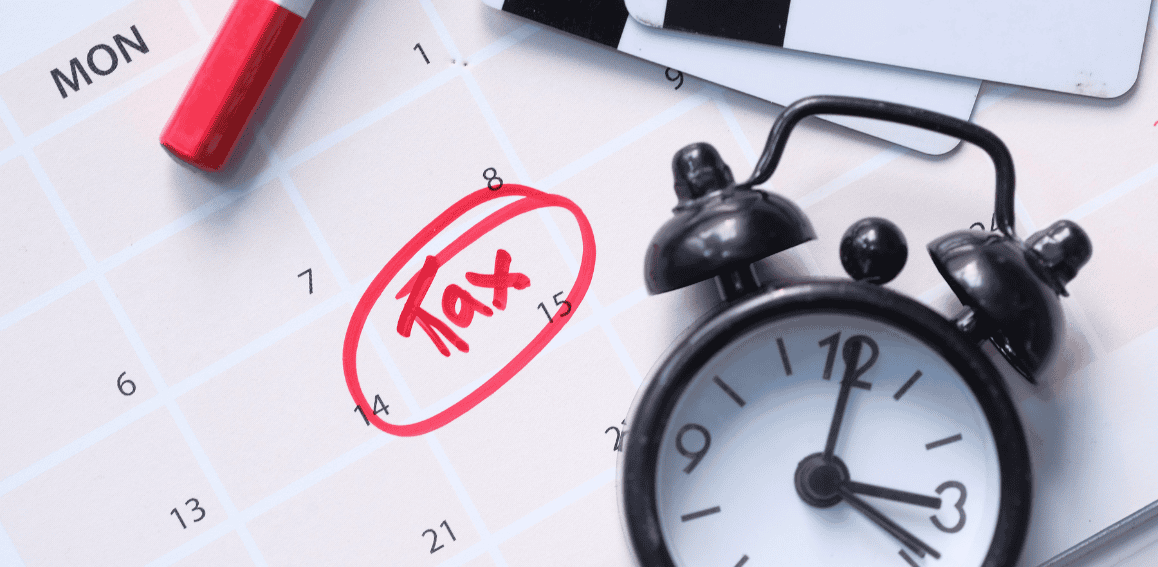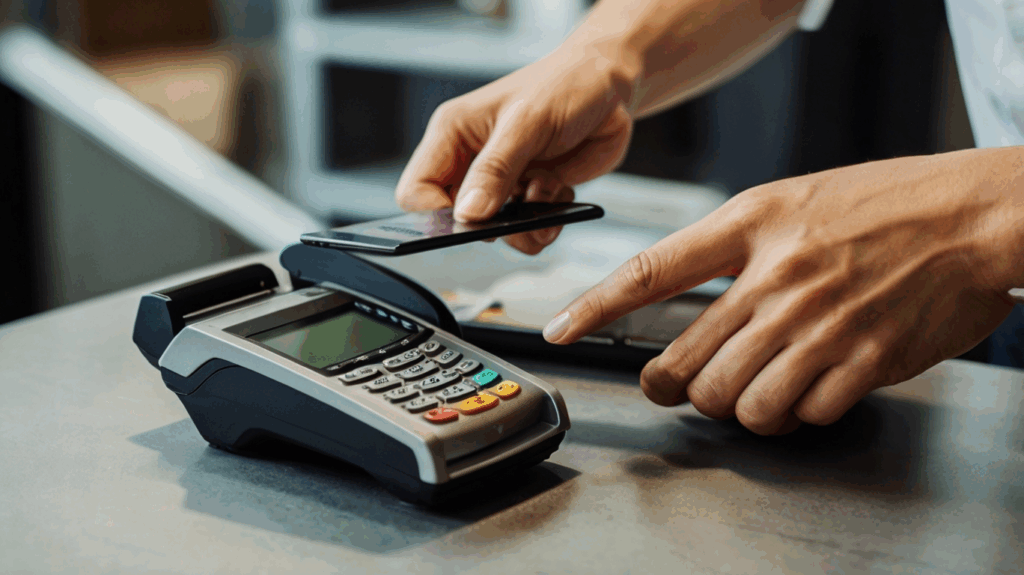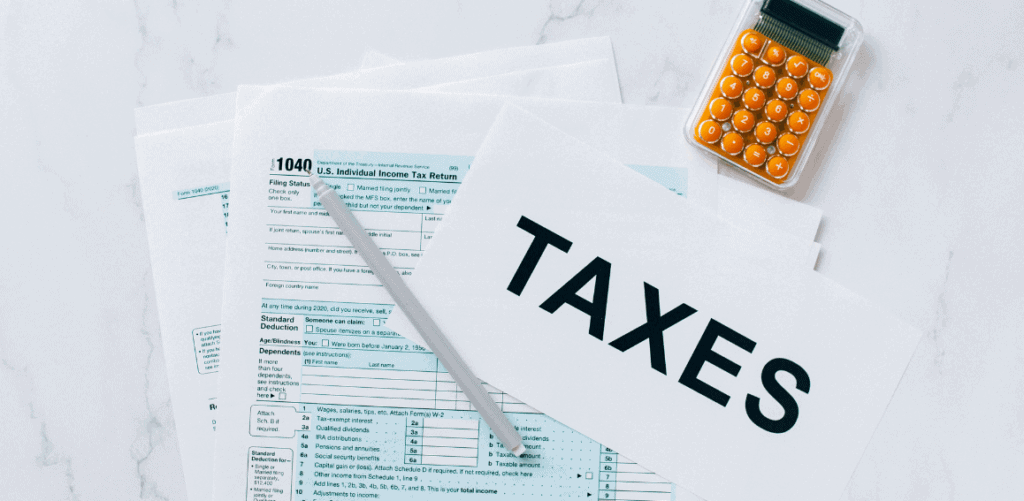
By alphacardprocess July 24, 2025
You’re manning the café, running the boutique or filling orders online, and your number one priority is sales and service. But if you’re doing business in Ohio, there’s one thing you can’t afford to ignore — Ohio sales tax compliance.
It’s not just about collecting the right amount from your customers — you have to file properly, stay on top of rate changes and prove your store’s records, in case things get wrong. Even a few accidental missteps can result in audits, fines and worse — injury to your business reputation.
Here’s the good news: Your point-of-sale (POS) system is likely able to handle most of the heavy lifting for you.
Today, point of sale systems are not just fancy cash registers. When set up correctly, they can apply tax rules, maintain exemption certificates, generate sales reports and even assist in filing returns. In this guide, we’ll break down what Ohio sales tax involves, where businesses go wrong, and how to use your POS to keep everything running smoothly — and legally.
What is Ohio Sales Tax and Who Needs to Collect It?
Ohio’s sales tax starts at 5.75%, but that’s just the beginning. Counties and transit agencies around the state may add on their own local rates, which means what your customer is actually charged could be closer to 7% or even 8% depending on where a sale occurs.

If you’re selling physical stuff — like apparel, electronics, home goods or restaurant meals — you probably need to collect sales tax. The same is true for some services, particularly those that provide both labor and materials. If your business has a physical presence in Ohio, such as a storefront, office or warehouse, you are responsible. But it doesn’t stop there.
Even online sellers need to watch out. If you’re shipping goods into Ohio and exceed certain sales thresholds, you may trigger what’s called economic nexus — meaning you’re legally required to collect and remit Ohio sales tax, even if you’re based elsewhere.
Some things are tax-exempt — groceries, prescription drugs and some medical devices are not taxed. There are also exceptions for non-profit organizations or to resale purchases, however, documentation is required.
Understand who collects, what’s taxed, and what’s exempt is the first step towards Ohio sales tax compliance and it all starts with your POS setup.
Common Mistakes Ohio Businesses Make With Sales Tax
Ohio sales tax compliance can appear straightforward on the surface; you charge the correct rate and remit it on time, correct? Regrettably, too many Ohio businesses are making mistakes that can be easily avoided and result in expensive audits or fines.
One of the most frequent errors is to charge only the state base rate of 5.75%, and not include any local county or transit authority taxes. Because Ohio adopts destination-sourcing when it comes to sales tax, the rate is no longer just about your business’s location.
Another issue? Failing to charge sales tax on related fees — such as packing, delivery or even gift wrapping. These add-ons typically are taxable in Ohio, but many businesses inadvertently skip them.
Misclassifying items is another problem. Food, for example, is exempt — though not all groceries are. Some things, like sodas or prepared foods, can be taxed depending on how they are sold.
Another overlooked issue? Inconsistent data across systems. If your payment processor (say, Stripe or Square) isn’t syncing properly with your POS system, you might misreport taxable sales — even with the best intentions.

Then there are errors with exemption certificates — with verifying or retaining resale or nonprofit documents. The burden is on you if these aren’t collected properly.
Finally, a significant number of businesses do not maintain proper digital records causing them to become vulnerable in an audit. A proper POS system can help prevent such missteps — as long as it’s one that’s been properly configured.
How POS Systems Help with Ohio Sales Tax Compliance?
Today’s POS (point-of-sale) systems are more than just digital cash registers — they’re vital compliance technology. When set up correctly, they remove a lot of the guesswork and potential for human error in sales tax management, particularly under Ohio’s confusing rules. This helps streamline debit and credit card processing and other payment methods.

Automatic Rate Calculations
Ohio uses destination-based sales, so you charge tax based on where the buyer receives it. A smart POS system does the math for you – state + county + local taxes – updating in real time when tax rates fluctuate. This is particularly useful if you sell across county lines or provide delivery.”
Product Categorization
You can specify if each item in inventory is taxable / non-taxable. This makes sure each SKU or modifier is taxed correctly. Think restaurant food vs. bottled soda, or retail goods vs. exempt medical equipment. As soon as it’s installed, the POS applies the correct rate at checkout. This simplifies Ohio sales tax compliance.
Customer Tax Profiles
With your POS, you can save your customer’s information with information like resale certificates, nonprofit exemptions, or that they’re out of state. This will prevent you from overcharging tax on excluded sales and make sure that you record the sale for audit coverage.
Detailed Sales Reports
A POS system records every sale, splits sales with a tax component into taxable vs. non-taxable ones, and records item-level tax data and the total tax collected. You can sort reports by date, item or location — a lifesaver come time to reconcile or refund.
End-of-Period Summaries for Filing
The majority of POS systems generate tax-ready summaries that can be directly imported into Ohio Business Gateway (OBG). That reduces manual entry and the potential for filing errors and it makes compliance easier.
If your POS system connects to a payment processor, you can be 100% certain that you’re collecting the right amount of tax without fear of inconsistencies.
Understanding Local Tax Rates in Ohio
One of the more important and often-overlooked component of Ohio sales tax compliance is knowing how local sales tax rates impact what you charge. Ohio follows a destination-based tax system, meaning that the total sales tax rate is determined by the location where the buyer receives the goods or services — not just where your business is based.
Ohio counties are allowed to tack on their own rates to the state’s base 5.75%, so rates vary across the state. For instance, Franklin County (which includes Columbus), now has a different combined rate than Cuyahoga County (Cleveland area). Local variations such as these can drive the overall rate above 8% in some parts of the country.

So what does this all mean for your business?
- If you have a physical storefront, you bill based on your geographic location.
- Now, if you provide delivery or shipping you pay taxes based on where the item is delivered.
- If you are selling online or remotely, you might have to figure tax by your customer’s ZIP code.
To remain compliant, you will need a POS system with ZIP code-based tax tables or one that updates local rates from a service. This guarantees precise, current calculations for each transaction — a major building block in being Ohio sales tax compliant.
When Do Businesses Need to Collect Sales Tax in Ohio?
Once the nexus is established, a business then collects Ohio sales tax. Nexus is the link between your business and Ohio which requires you to pay tax. This can happen in two ways: physical nexus and economic nexus.
Physical Nexus
If your business has a physical presence in the state of Ohio then you have nexus there. This includes:
- Running retail stores, warehouses, offices or distribution centers in Ohio
- Having a staff or agents or independent contractors that work or solicit sales in that state
- Storing inventory in Ohio (could be your own location, could be a fulfillment center like Amazon FBA)
And if any of the following are the case, you have a responsibility to collect sales tax and submit it to the state Ohio. This ensures Ohio sales tax compliance.
Economic Nexus
So even if you don’t have a physical presence in Ohio, you can be required to collect Ohio sales tax if you have significant sales in the state. Specifically, you must collect if you have either more than $250,000 in sales or more than 200 separate transactions:
When you meet or exceed one of these thresholds, you’re required to register with the Ohio Department of Taxation and start collecting sales tax on the first day of the first full month that begins at least 30 days after you met or exceeded the threshold.
Knowing when nexus applies is an important aspect of remaining in compliance with the Ohio sales tax compliance, and your POS system can help in monitoring these statistics for you automatically.
Failure to Collect Ohio Sales Tax: What’s at Stake?
Failure to collect and remit Ohio sales tax isn’t simply a bookkeeping mistake — it can mean major financial and legal problems for your business. Whether by accident or by design, non-adherence to Ohio sales tax compliance can result in high penalties, interest, and even compliance actions by the state.

1. Penalties
Late Filing: A $50 fine will apply if you do not file your Ohio sales tax return by the due date, even if no tax was due.
Late Payment:
- 5% penalty for being 1-30 days late What happens if you file late?
- 10% penalty if not paid within 30 days
- If you receive a notice of tax due and fail to pay by the date specified, an additional 10% penalty may apply — bringing the total to 20% of the unpaid tax.
2. Interest Charges
Unpaid Ohio sales tax generates interest 31 days after its due date. The rate keeps changing annually based on the federal short-term rate. Ohio’s interest rate for recent years has been about 4.25%, compounding the longer a balance goes unpaid.
3. Collection and Enforcement Actions
If bills are not paid, the Ohio Department of Taxation will escalate enforcement action to obtain the tax debt amount due, such as:
- A lien against your property or other assets for unpaid taxes
- Business Account seizure or freeze
- Your vendor’s license or business registration may be suspended
- Criminal charges if willful tax evasion and fraud occurs
In the end, keeping on top of your Ohio sales tax compliance helps keep the risks at bay and the trust of your customers and the regulators. A well-set-up POS system can alert to missed filing and payment deadlines before they snowball into significant problems.
Conclusion
Ohio sales tax compliance might seem complex at first — especially with local rate variations, exemptions, and shifting rules. But with the right point-of-sale (POS) system, staying compliant becomes far less daunting.
By configuring your POS correctly and reviewing your setup regularly, you can avoid costly mistakes, reduce manual effort, and focus more on growing your business than decoding tax codes.
Don’t wait for a notice from the Ohio Department of Taxation to make changes. Review your POS system’s tax settings quarterly to ensure you stay ahead of updates and protect your business from unnecessary risks.
Frequently Asked Questions
1. Do I have to collect Ohio sales tax if I only sell online?
Yes, if you exceed $100,000 in gross sales or complete 200 or more transactions in Ohio in a year, you’ve established economic nexus. That means you must register and collect Ohio sales tax, even if your business is based out of state.
2. What’s the current sales tax rate in Ohio?
Ohio has a base state rate of 5.75%, but local counties can add their own rates on top of that. Depending on where your customer takes possession of the item, total rates can exceed 8% in some areas. POS systems can help apply the correct local rates using geolocation or ZIP codes.
3. How do I file my Ohio sales tax returns?
You’ll file through the Ohio Business Gateway (OBG). Most businesses file monthly, quarterly, or semi-annually, depending on their sales volume. A good POS system will generate exportable reports to make filing faster and more accurate.
4. What happens if I forget to collect or file Ohio sales tax?
The state may impose penalties, interest, or even take enforcement actions like liens or license suspension. If tax evasion is suspected, criminal charges are also possible. That’s why having a POS system that flags due dates and calculates taxes correctly is so important.
5. Which POS systems support Ohio sales tax compliance?
Many cloud-based POS systems support localized tax rules. Popular options include Square, Clover, Shopify POS, Toast (for restaurants), and Lightspeed. Look for features like destination-based rate automation, exemption tracking, and reporting tools tailored to Ohio sales tax compliance.